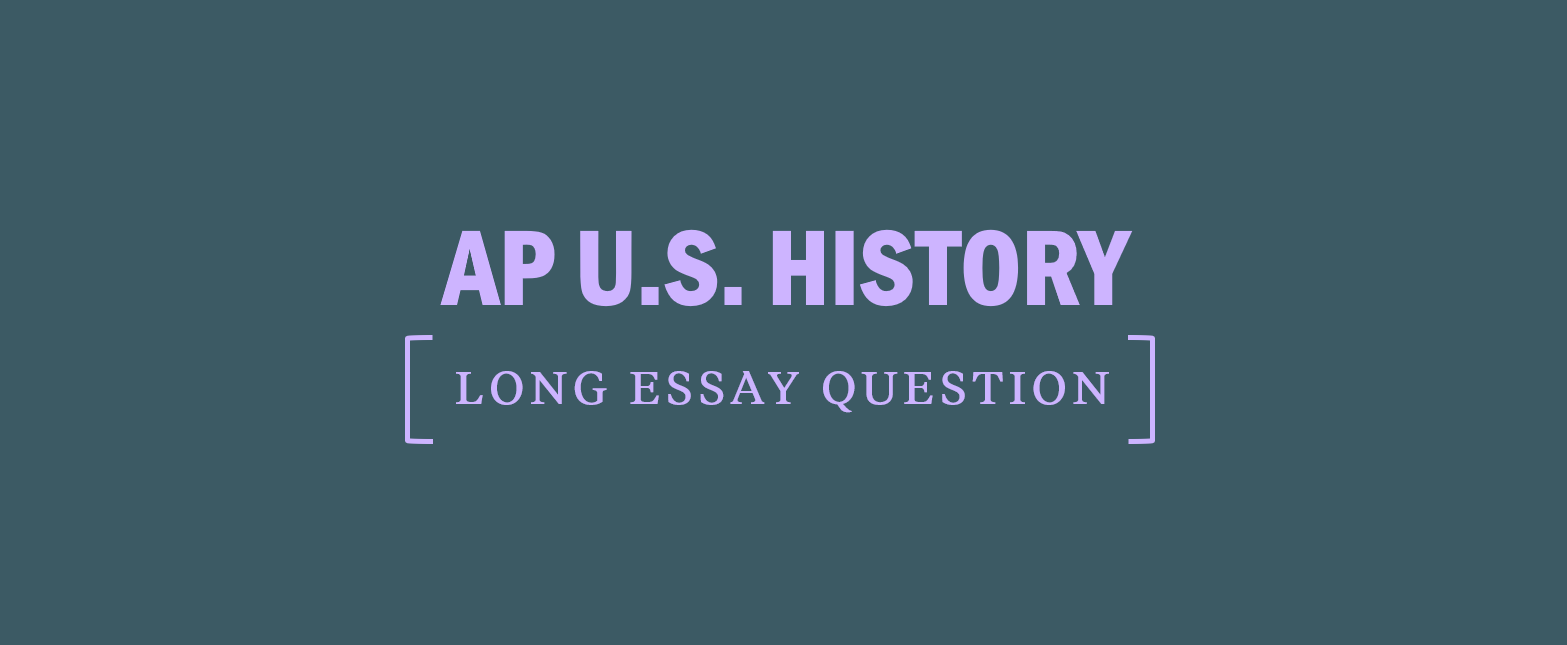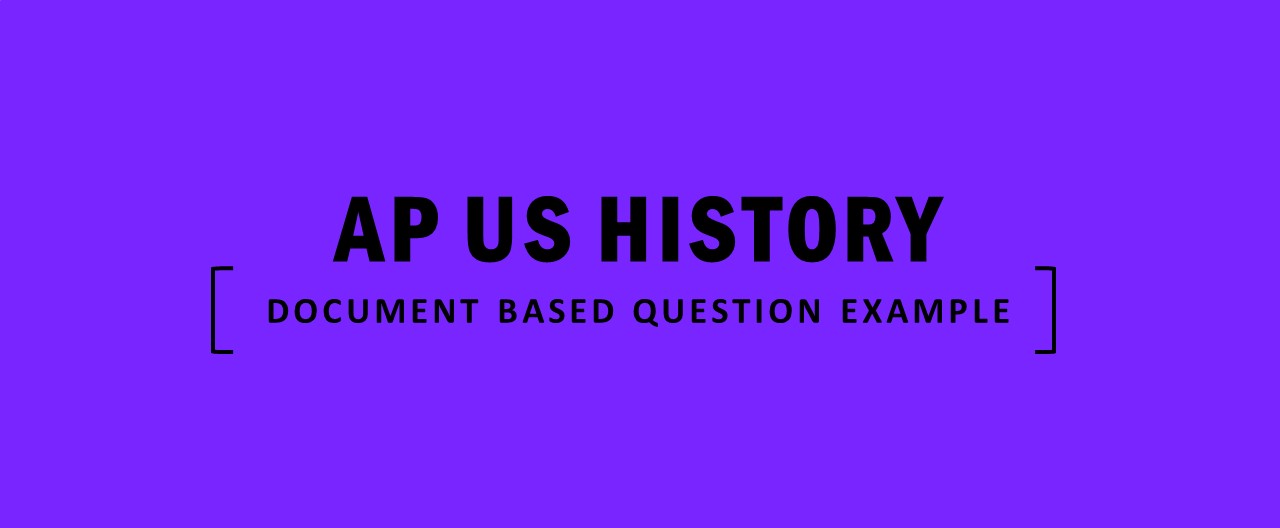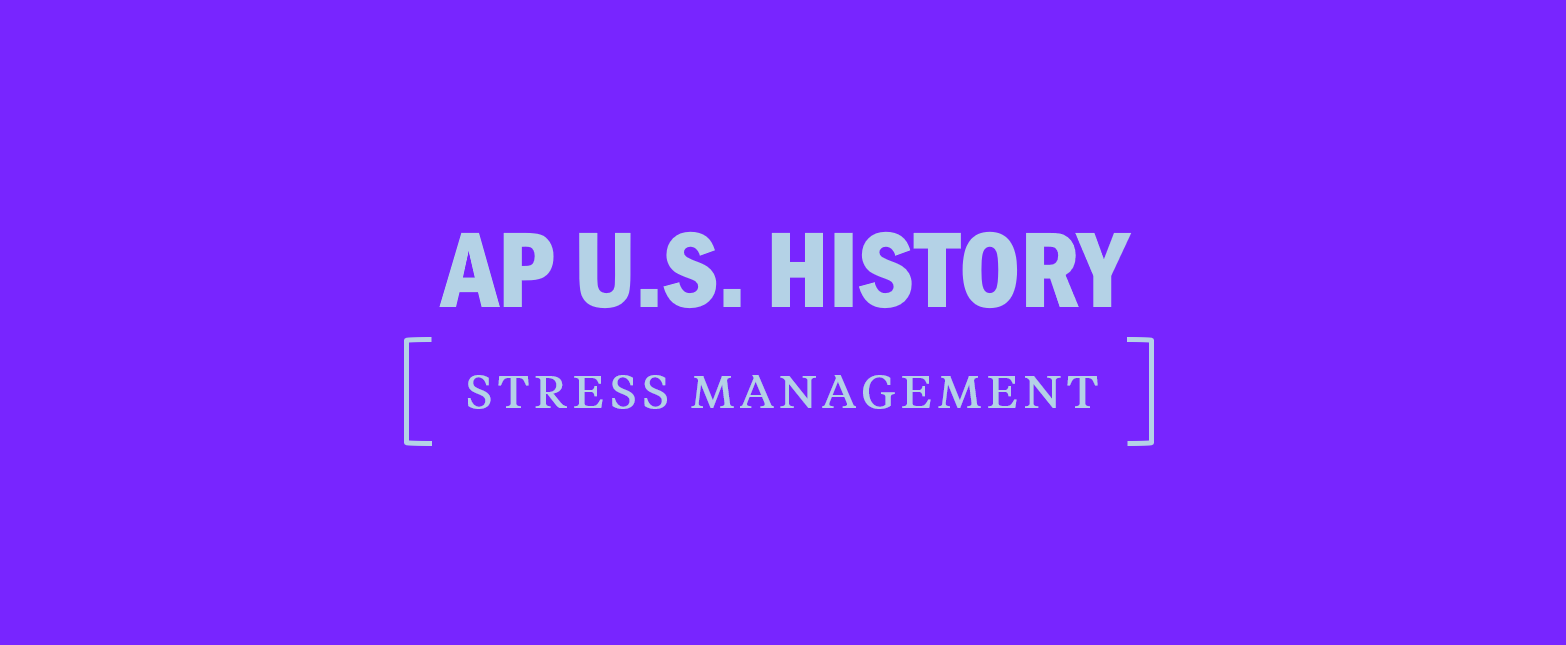How to Approach the AP U.S. History Long Essay Question
The second part of Section II of the AP US History exam contains three long essay questions—you must respond to one. The long essay question assesses your ability to apply knowledge of history in a complex, analytical manner. In other words, you are expected to treat history and historical questions as a historian would. This process is called historiography—the skills and strategies historians use to analyze and interpret historical evidence to reach a conclusion. Thus, when writing an effective essay, you must be able to write a strong, clearly developed thesis and supply a substantial amount of relevant evidence to support your thesis and develop a complex argument.
The College Board’s characteristics of a high-scoring long essay question response are listed below. Note that the requirements are very similar to those of the DBQ; the primary difference is that any requirements related to use of the documents are removed from the scoring requirements for the long essay question.
- Thesis: Make a thesis or claim that responds to the prompt. The thesis or claim must be historically defensible and establish a line of reasoning.
- Context: Provide context relevant to the prompt by describing a broader historical development or process.
- Evidence: Use specific and relevant examples as evidence to support an argument in response to the prompt.
- Historical Skill: Use a historical reasoning skill (causation, comparison, or continuity and change) to develop an argument in response to the prompt.
- Complex Understanding: Demonstrate a complex understanding of an argument that responds to the prompt by using evidence to corroborate, qualify, or modify the argument.
AP U.S. History Long Essay Strategy
The long essay question may be the most abstract prompt you encounter on the free-response section. You must select one of the three long essay questions. While each question focuses on the same reasoning process (for instance, all three questions may test causation), the historical developments and processes tested will be from different time periods: question 2 will focus on the years 1491–1800, question 3 will focus on the years 1800–1898, and question 4 will focus on the years 1890–2001. Choose the option that will best showcase your ability to construct a historically defensible thesis and provide specific, relevant evidence.
Consider the following special strategies for the long essay question. Scoring requirements are highlighted in bold.
Step 1: Analyze the Prompt
- Each long essay question will ask you to “evaluate the extent” of some factor in American history. Since you are evaluating, you will need to develop an argument that addresses the prompt. Make sure to read all three prompts carefully. Think of the evidence you could use and the argument you could develop in response to each one, then choose the question you feel most confident about.
- Begin crafting your thesis statement. You must have a thesis that makes a claim and introduces the reasoning of your argument. It is not enough to merely restate the question as your thesis; you must take a position. Don’t be afraid of making a strong claim; just be sure you can provide relevant evidence to support your assertion. Your thesis may also outline the categories of analysis, or the major points, you will use in your essay.
- Part of developing your thesis should be considering how your essay’s argument will demonstrate a complex understanding, perhaps by analyzing multiple variables, by considering both changes and continuities, or by making an insightful connection to another time period.
Step 2: Plan Your Response
- Making a careful plan can help you make sure you address all the scoring requirements.
- Paraphrase your thesis statement. Knowing your claim will make it easier for you to plan an effective argument in your essay. In light of the documents, you must make a claim and/or demonstrate a line of reasoning that responds to the prompt. Avoid statements that are vague or general (“The Vietnam War was very significant”) and make a claim that responds to the prompt, uses both the documents and your historical knowledge, and sets up the rest of your essay (“The Vietnam War impacted Americans’ perceptions of the U.S. role in international politics, the power of the federal government, and the status of young people, influencing legal and social changes in American society”).
- Be sure your thesis or overall plan incorporates a complex understanding. You need to demonstrate that you have more than just a basic understanding of the content, so your thesis or overall essay should address complexity in the historical development—perhaps by including multiple variables, by considering both causes and effects, or by making an insightful connection to another time period. See below for a complete list of ways to demonstrate complex understanding.
- Make a note about how you will provide context for the topic of the prompt. This may fit well in the introduction or first body paragraph.
- Make a simple outline of your body paragraphs; there will likely be one paragraph for each point you made in your thesis. (For instance, in the above example, there would be a paragraph each about impacts on international politics, the federal government, and the status of young people.) For each paragraph, consider these scoring requirements:
- List the documents you will use as evidence—remember that you must use six or seven to earn the maximum number of points for using the documents.
- Consider whether the paragraph is a good place to provide additional evidence—you must include one additional historical example.
- Think about when it would be beneficial to explain sourcing, or how a document’s context or situation is relevant to the argument—you must do so for three documents.
- Finally, review your plan and check off each requirement in your test booklet to ensure you addressed all six.
Step 3: Action! Write Your Response
- Nothing is more important in the first paragraph than the clear statement of an analytical thesis. The reader is most interested in seeing a strong thesis as soon as possible.
- Your thesis can be more than just one sentence. With the compound questions often asked by the DBQ, two sentences might be needed to complete the idea.
- Refer to the authors of the documents, not just the document numbers.
- A good idea is to write a concluding paragraph that might extend your original thesis. Think of a way to restate your thesis, adding information from your analysis of the documents.
Step 4: Proofread
- Skim for any glaring errors and, if you have time, check again to make sure your response meets each of the DBQ requirements.
Be prepared to demonstrate complex understandingAP Expert Note
The AP exam asks you to analyze sources and develop arguments in a sophisticated way. Demonstrating your complex understanding of the topic at hand is crucial to your success, and here are some ways you can do so.
NEXT: AP US History Long Essay Example






